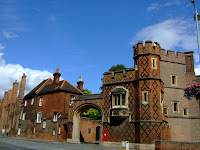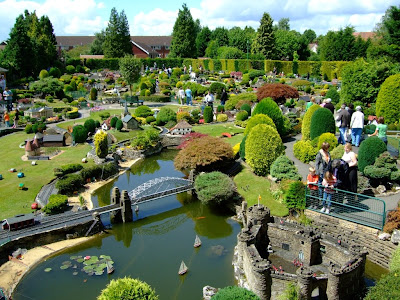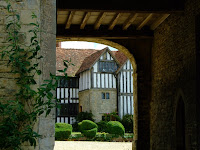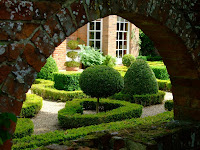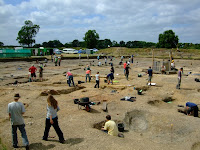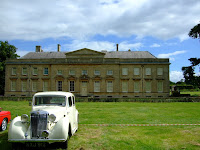 With an MG Saloons Day as an excuse we headed north to Lamport House, had a look at their cars while they looked at ours and then wended our way back home via Holdenby House and the back routes, byways and little villages of Buckinghamshire.
With an MG Saloons Day as an excuse we headed north to Lamport House, had a look at their cars while they looked at ours and then wended our way back home via Holdenby House and the back routes, byways and little villages of Buckinghamshire.

Holdenby House was, at the time of building, the biggest home in England. To see it now you need to visit Northampton where a whole street of houses was built from the recycled stone after 7/8 of it was demolished.
 The kitchen wing (since extended somewhat) and two arches left standing in a field near the house are all that remains of the place where Charles I was ‘imprisoned’ and it was through the arches that the Parliamentarians came to deliver the news of his death warrant and to take him away.
The kitchen wing (since extended somewhat) and two arches left standing in a field near the house are all that remains of the place where Charles I was ‘imprisoned’ and it was through the arches that the Parliamentarians came to deliver the news of his death warrant and to take him away.

Charles and his father, James I, used to visit the House to indulge in falconry and that option is still open today in the form of corporate experience days at the falconry based here. We were treated to a falconry display on the front lawn; an entirely different sort of aerial acrobatics to yesterday.
 From there it was a leisurely trip home, enjoying the summer scenery of roadside wild flowers and fields of ripening grain as we dawdled through Buckinghamshire’s delightful villages
From there it was a leisurely trip home, enjoying the summer scenery of roadside wild flowers and fields of ripening grain as we dawdled through Buckinghamshire’s delightful villages













